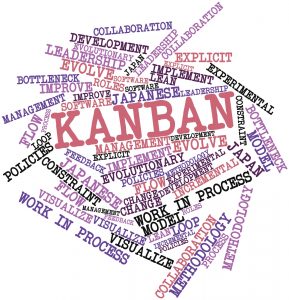This week we continue expanding our common understanding of the next set of Lean terms.
Just in Time
All production parts, consumables and sub assemblies are pulled into the production according the customer demand, as opposed to the traditional pushing production based on a central schedule or ERP/MRP system, regardless of current requirements or situation.
How does this help?
Many elements must be in place for Just in Time to work, so implementing JIT system pushes everyone to consider all other systems that support and function within Production – standard work, good training, Kanban, metrics and support people who support the production workers are all needed. JIT allows a strict balance of lead times and inventory, ensuring that customer demand can be met without adding extra inventory or people into production.
Continuous flow
One element of a JIT system, continuos flow is where the production work in progress moves smoothly between work stages with little (or no) inventory buffers between each step.
How does this help?
Continuous flow is the ultimate lean production system – the moving production line in a car plant. It helps by setting vert strict levels of control over the amount of work that must be done at each stage, with minimal variation. Reducing variation relies on the support people to have good, robust designs, good quality of supplied parts and good parts supply. If any of these elements aren’t met, then the flow line will not function efficiently – there is no room for rework, having meeting about what to do or working things out as you go. Each part of the process is carefully orchestrated.
A process that fits into the JIT system to signal the need for work, or action. For kanban the signal is a physical indicator – it may be a card, an empty box or a returned trolley.
How does it help?
Factories have many things going on at once. A good manager doesn’t need to know about everything that is going on. Tasks like parts supply and sequencing parts at a machine are tasks that can be controlled by a kanban system. The challenge with a kanban system is that it takes good planning and a good knowledge of kanban systems to implement one. Once it’s set up and everyone is trained, it will run smoothly, with little management input.





